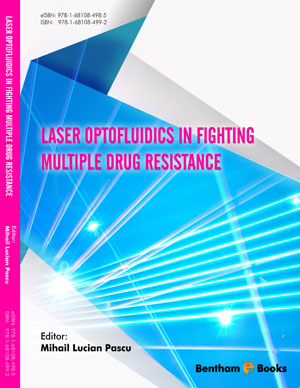Abstract
The unresonant interaction between a single droplet and a single laser beam takes place when the beam is not absorbed by droplet’s material; it leads to specific effects induced in the droplet. The experiments reported here are made on droplets consisting in water solutions; 532 nm laser beam is used to produce unresonant interaction since water absorbs very little in green. The results on unresonant interaction, evidence several effects: (i) damped deformations and vibrations, (ii) expulsion of micro-jets of water that propagate with supersonic speeds and production of micro- and nano-droplets that are springs from mother droplet with different lower speeds, (iii) production of horizontal pillars of liquid and of cylindric channels within the droplet leading to appearance inside it of air bubbles. The water droplet interaction with a laser beam focused in its equatorial plane on droplet’s surface, produces a velocity gradient of water inside the droplet that may be experimentally evidenced. The velocity gradient increases with increasing beam energy and does not depend on droplet volume. The surface tension and liquid viscosity characteristics influence the effects produced by the laser beam on droplet and the propagation speeds of liquid material formations emitted out of them. Studies on unresonant processes have shown that if produced on a droplet that contains a laser dye, they may be accompanied by effects induced when the interaction is resonant, i.e. the laser radiation is absorbed by droplet material. Such a “combination” depends on laser beam energy, solvent, viscosity and liquid surface tension.
Keywords: Laser ablation, Laser dye, Microfluidics, Microdroplets, Nanodroplets, Non-resonant interaction, Optical radiation pressure, Pendant droplet, Resonant interaction, Rhodamine 6G, Resonant interaction.






















